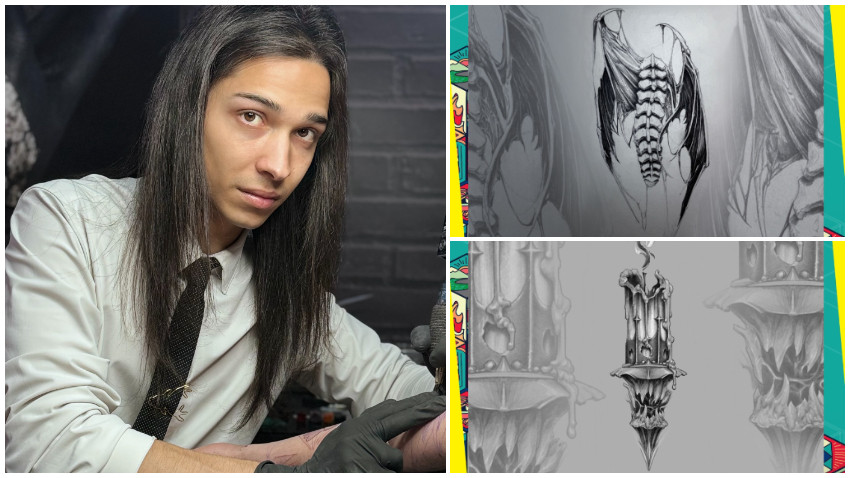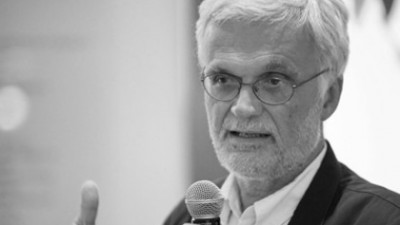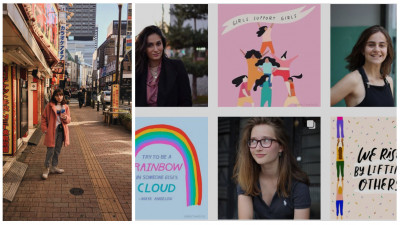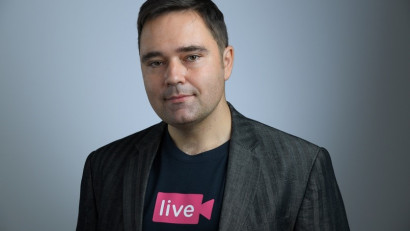Ezio Manzini is one of the well-known promoters of social innovation as the main driver of sustainable changes. Currently teaching Industrial Design at Politecnico di Milano, he is also the founder of DESIS, a network of projects, programs and events that have been putting another kind of design on the map for several years: social design for good.
Ezio thinks that everyone can and should think in socially innovative ways and help design a better world. This is the main point of his third book - Design, When Everybody Designs - An Introduction to Design for Social Innovation - that comprises his work over the last 10 years. The Romanian version is to be launched in his attendance today and tomorrow, at an event organized by Vellant publishing house, with the participation of several other invited speakers. Though well-travelled, Ezio told us he doesn't know Eastern Europe very well and is very curious about the opportunities it could bring; in his own words: "this could be the beginning of a new story!".
[Versiunea in limba romana a interviului se gaseste aici.]
Dealing with social innovation design
In some ways, I’ve always dealt with this issue, even though we didn’t call it design for social innovation towards sustainability. If it is true that in the past decades I contributed to start several new lines in the design domain (such as strategic design and service design), it must be said that my driver has always been finding better design cultures and tools to interact with social networks and help them to move towards more sustainable ways of thinking and doing.
To this purpose we have put forth a series of projects and actions – the European research ‘EMUDE /Emerging Users Demands for Sustainable Solutions’ (in which design schools were asked to look for and collaborate with creative communities, bringing forth a series of conclusions on social innovation), followed by the ‘Creative Communities for Sustainable Lifestyles’ (CCSL) research, supported through the United Nations Environment Programme. The latter extended the same aims and methodology beyond Europe, worldwide. At the same time, in order for us to amplify our approach and messages, we put together the Changing the Change Conference, in the framework of the Torino World Design Capital 2008 event.
A positive legacy of all these different activities has been the DESIS network.In the past 10 years, the notions of social innovation and design for social innovation spread worldwide. Of course, this is not a DESIS achievement … but we are proud to have been part of this positive story.
Scalability of social innovation
Social innovation design is scalable, but in different ways than processes used to scale technological innovation. To scale social innovation means to create more favorable enabling ecosystems. That means environments in which more people can adopt innovative ways of living (that, for me, means more sustainable and resilient ways of living). On this note, the next phase of my work and my main interest for the future is design for collaborative city making.
Some designers today are already working as social innovators. Others are helping social innovators in their activities. But many are moving in the opposite direction, that is: against the social innovation towards sustainability trends. So we need to turn that around.
3 main ideas you share with your students
I have never taught “industrial design”, but simply “design”, with the above-mentioned branches of strategic design, and service design. What I try to do is teach students to become reflexive designers in project-based courses. That is, to develop their capacity to be, at the same time critics (towards the state of things), creatives (imagining something new), dialogical (with the social reality they are working with), pragmatic (to find viable solutions). The idea that these four different capabilities can go together is the most important idea I try to leave my students with.
Another one is that, if you want to be a designer, you should look for opportunities in every context you have the opportunity to work, even the most difficult ones. The third is: every problem can be reframed. That means: every problem can be seen also in other ways.
And this goes beyond my students, just as my book proposes; these days everybody, willing or not, must adopt this design approach. Design experts, i.e. professional designers, can help people and organizations do it better themselves in several ways I talk about in the book.
Recommendations: designers we should follow
If we did a list of expert designers to follow, we’d never end this interview. In any case, I can name some recommendations: from Hilary Cottam to John Thackara, in the UK; from Lou Yongqi to Fang Zhong, in China; from Francois Jegou to Nik Baerten in Belgium; from Giordana Ferri to Anna Meroni, in Italy.
























